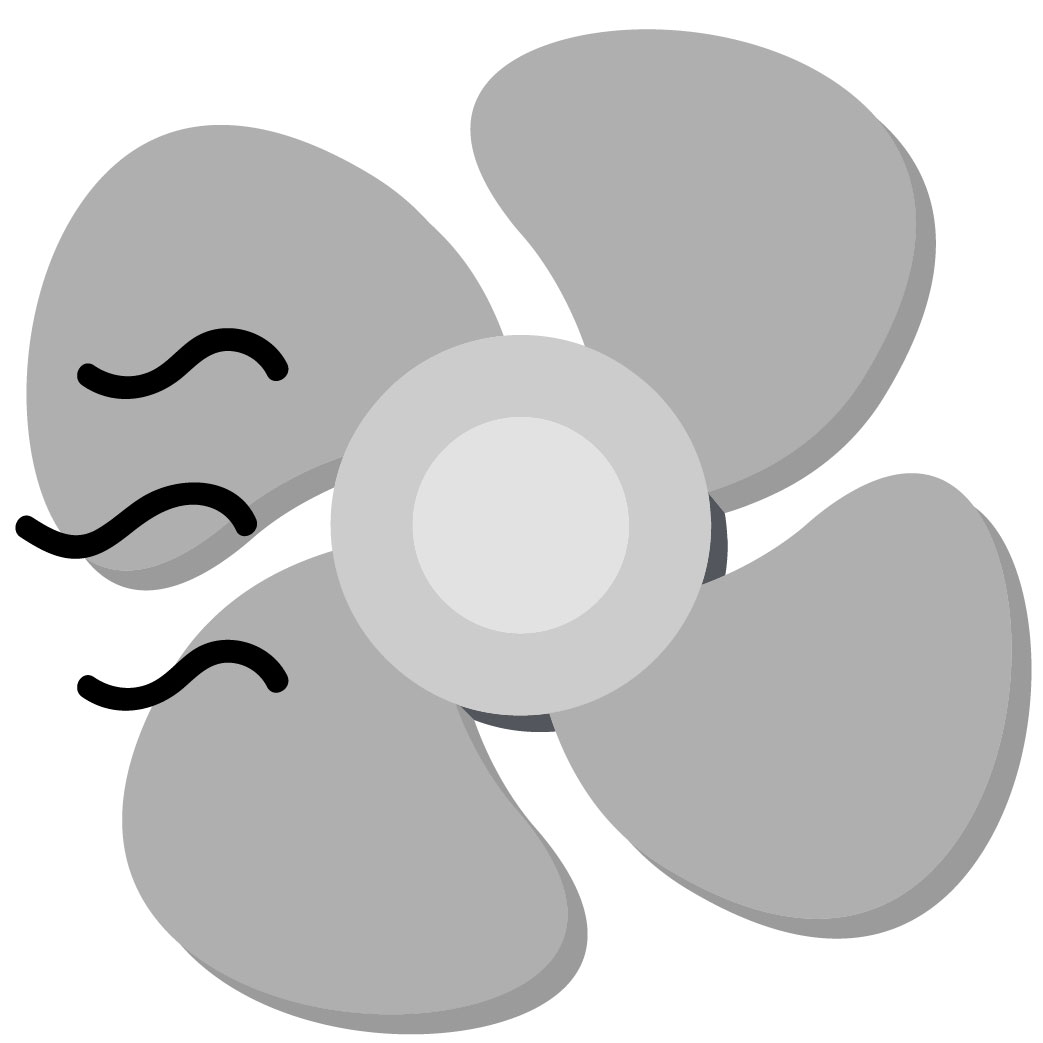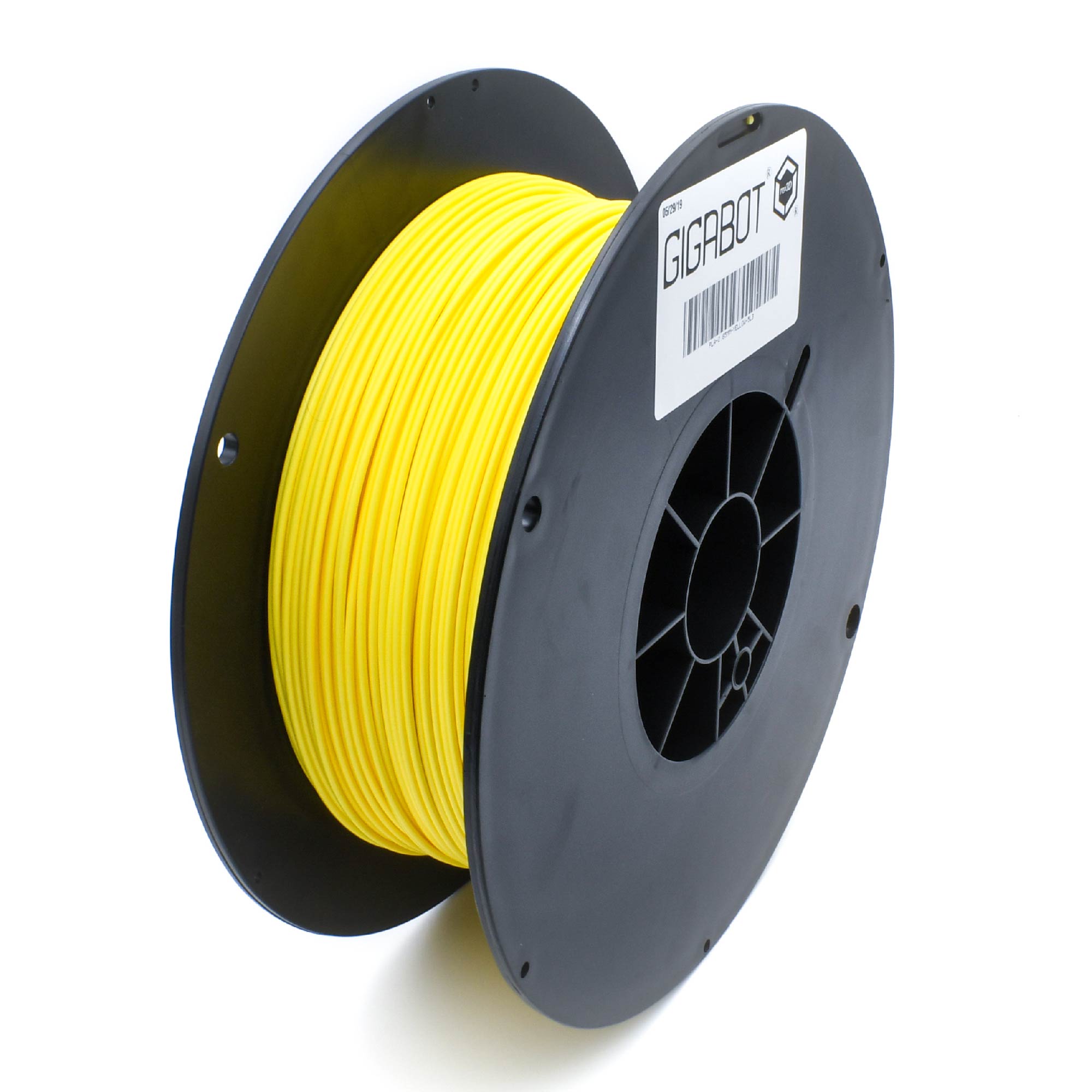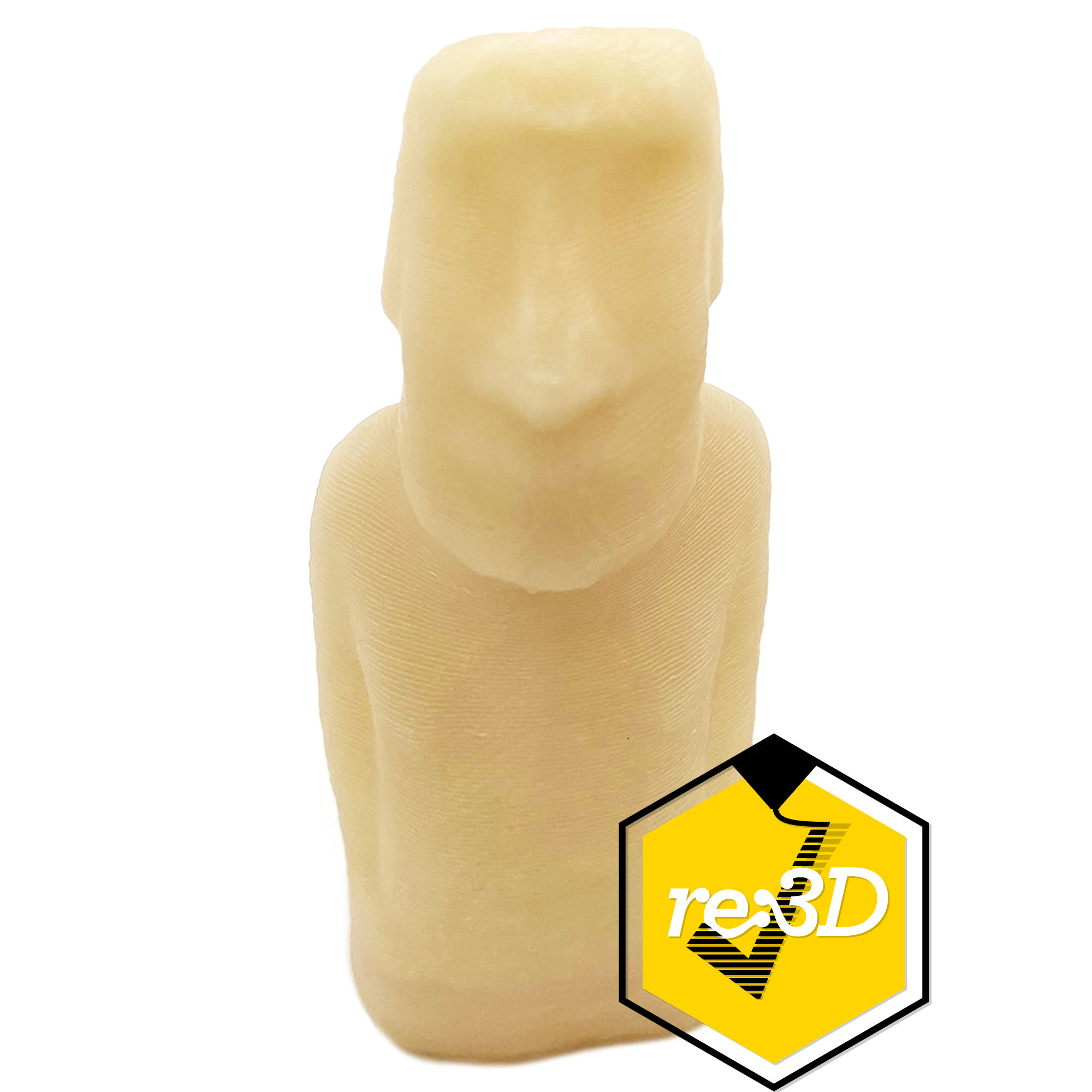
PET
Polyethylene Terephthalate (PET) is a durable material with a glossy appearance. Outside of PLA and ABS, PET is a very common filament. A variation of PET, PETG, is often sold as a filament as well. PETG is a form of Polyethylene Terephthalate (PET) with glycol introduced. The introduction of glycol causes PET to become more flexible and resistant to impacts. PETG also resists shrinking and sticks to other materials easily, unlike other materials that print at a similar nozzle temperature to PETG. These properties allow PETG to fill a role between PLA and ABS as a strong, easy to print material. PETG is used for water bottles, oil containers, and plastic packaging. Recycled versions of PET and PETG, often called rPET, is a go-to recycled material for many closed loop applications. For those looking to branch from PLA and create more durable parts, PET, PETG, and rPET are good choices.
PETG excels when you take advantage of its material properties. If you need something that can endure the outdoors, PETG’s impact strength makes it a suitable material. Its chemical makeup makes it bond easily to other materials and serve as a versatile support material.
- Containers
- Raft & Support Materials
- Outdoor Applications

Young's Modulus
2,100 MPa

Tensile Elongation
130 %

Ultimate Tensile Strength
-

Notched Izod Impact Strength
100 J/m

Shrinkage Rate below 0.5%
0.0004 mm/mm

Glass Transition Temperature
80 ºC

Heat Distortion (0.45MPa)
70 ºC

Decomposition Temperature
280 ºC

Extruder Temperature
235 ºC

Heated Bed Temperature
70 ºC

Bed Adhesion
Adhesive Needed for PET, Optional for PETG

Enclosure
Optional

Fans
-

Printing Speed
3,600 mm/min
PET is one of the most commonly recycled materials. Reground PET is often turned into rPET filament for 3D printing. PETG is technically recyclable, but it is often rejected from commercial recycling centers due to its low melting point causing issues when recycled with other materials. It may be possible to regrind PETG and to reuse it in pellet fed printers such as GBX.


























